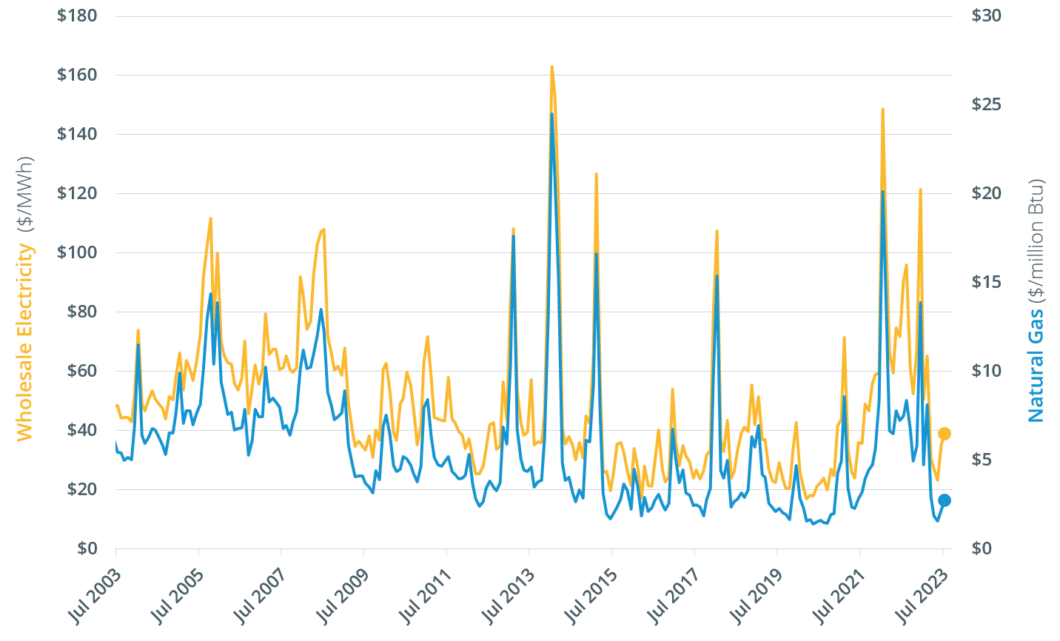Two factors are the main drivers of wholesale electricity prices in New England, according to the region's grid operator: the cost of natural gas and other fuels used to generate electricity, and the level of consumer demand for power.
Fuel costs are a key component of the cost of electricity, and natural gas is the "predominant fuel in New England", used to generate 52% of the power produced in 2022 by New England’s power plants. According to ISO New England Inc., the regional transmission organization, natural gas-fired power plants usually set the price of wholesale electricity in New England.
As a result, the grid operator says that "average wholesale electricity prices are closely linked to natural gas prices." The chart below, prepared by ISO-NE, shows the close correlation between wholesale electricity and natural gas prices between for the past two decades:
ISO-NE reports that demand for electricity is the second main driver of the region's wholesale electricity prices, and that demand "is driven primarily by weather, as well as economic factors." The extent to which consumers rely on electricity-powered heating and air conditioning equipment means that peak demand is driven by weather.
While New England's original electric system reached peak demand in winter, the region shifted to summer-peaking in the early 1990s due to increased air conditioner use and decreased reliance electric heating. The grid operator's records as of mid-2023 show that the all-time high winter peak of 22,818 MW occurred during a cold snap in January 2004, and the all-time peak demand of 28,130 MW occurred during an August 2006 heat wave.
ISO-NE projects future growth in consumer demand for electricity and a shift back to a winter-peaking system by 2035, as beneficial electrification of the region's heating and transportation sectors add heat pumps and electric vehicles to the grid.




No comments:
Post a Comment